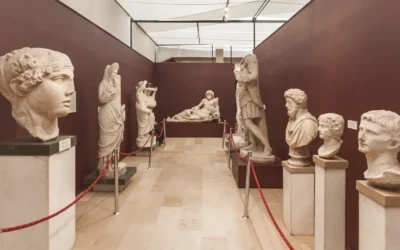What is Conservation?
To truly understand why heritage conservation is important, we have to take a step back and talk about what conservation actually is.
According to the American Institute for Conservation, conservation is “all those actions taken toward the long-term preservation of cultural heritage – including examination, documentation, treatment, and preventive care, supported by research and education.”
In layman’s terms, conservation is people on a mission to preserve the objects and experiences that matter to us as a society on a day-to-day basis.1 Conservation professionals work tirelessly to prevent damage where possible and to repair damage where practical.
Prevention is Key
On the prevention side, conservation professionals prepare for catastrophic events such as earthquakes, fires, wars, and floods, while also trying to minimize the impacts of seemingly small daily realities like humidity, vibration, temperature, dust, mold, etc.—you get the picture.
Heritage conservation professionals focus on the details—the small things others might miss, the things that are better when not noticed at all.
After all, a conservator wants viewers engrossed in the emotion a piece of art evokes, not to be stuck thinking about whether the current climate of the gallery is ideal for reducing long term damage for the current pieces showcased in the exhibit.
Part Science, Part Art
Preventive conservation is focused on observing, measuring, and recording the minute details surrounding a given object (or hundreds of objects) and then thinking strategically about how to minimize any damaging externalities. conservation is a balance between art and science.
Conservation professionals work to understand the impact light, dust, humidity, temperature, mold, and pollution can have on a work of art. Through a thorough understanding of science and natural processes, they build longer term conservation strategies that minimize the impact of daily deterioration on objects.
Conservation work not only takes patience and tremendous attention to detail, but it is also largely an ongoing process. Conservation is focused on ensuring the objects and experiences that bring value to this world will continue to be around for years to come.
Our Shared Cultural Heritage Matters
Conservation is that behind the scenes work that allows society at large to continue to be inspired by the rich diversity of the human experience. In many ways, conservation is the act of preserving a shared cultural history—one that is alive and evolving daily. At least that’s how we look at it and that’s one reason we were inspired to create Conserv.
Conserv bridges the divide between technology and art. We recognize that conservation professionals are quiet heroes in our society. They are the group of conscientious, smart individuals working on the difficult challenge of preserving the items that tell our collective stories.
Conserv has a goal to empower conservation professionals to take better care of their collections.
There are more than 450,000 art and cultural collections around the world and at Conserv, we’re ready to serve the thousands of professionals who are tasked with taking care of those items. In short, we’re bringing better tools to the people that preserve our culture, art, and history.
1 Fletcher Durant gave a very interesting talk at the 2019 AIC Annual Meeting entitled “Conservation is Not Neutral” which looks at the question of “how do we decide what to conserve?” through the lens of “who gets to decide what we conserve?”
Connect with a Conserv Conservator




